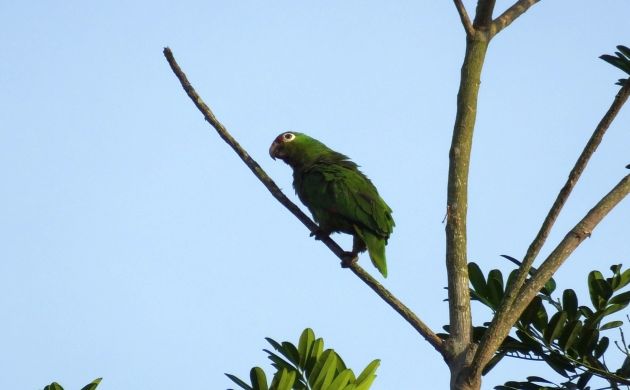
There are lots of great birding sites in Costa Rica. In fact, go anywhere with a good amount of natural forest and the birding is gonna be good. Although most birders visiting Costa Rica hit pretty much the same sites, you could just as well go to a bunch of other, lesser known places with the same type of habitat and see most of the same birds. However, there are a few stand out sites here and there that are significantly better for species like Jabiru, Lance-tailed Manakin, and Nicaraguan Grackle to name a few. Visiting those out of the way spots is necessary if you want to add these and other choice “bonus birds” to the three or four hundred species ticked at the usual sites.
Nicaraguan Grackle only lives in marshes around Lake Nicaragua.
One of the best of those bonus bird spots is Cano Negro because although it seems out of the way, this extension of the southern Nicaraguan Lake wetlands is pretty easy to get to. Ironically, thanks to the non-sustainable, land poisoning agriculture seen en route, there is a straight, fast, good road that zooms right on up to Los Chiles, the closest town to Cano Negro. Although a straight fast road might not seem to be a big deal, it’s a rare, welcome occurrence in seriously mountainous Costa Rica.
From the Arenal area, it’s a pretty quick hour and a half deal up to Los Chiles. From San Jose, it takes four to four and a half hours but given the excellent birding opps on the way, you might want to allocate a bit more time. Last weekend, my friend Susan and I did just that in case we saw anything on the way. Since we took the very birdy route past San Ramon, we of course did, and ended up seeing several tanagers, and excellent looks at the Northern Schiffornis at the start of the Manuel Brenes road.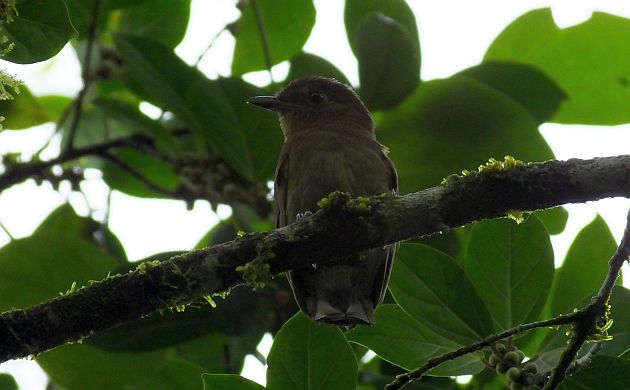
Essentially a boring brown bird with a cool voice and weird name.
The real Gung-Ho, Kung-Fu birders would have drove to this site at midnight and just slept in the car or looked for owls until the dawn chorus in excellent middle elevation rainforest but since we have families, and I hate being exhausted and zombie-eyed from lack of sleep, more leisurely birding was just peachy.
Not to mention, we knew that good bonus birds were awaiting at Los Chiles and Cano Negro anyways. With a schiffornis under our belts, we reached Los Chiles an hour before the meeting time with the group I was to guide, and headed right over to Medio Queso for a bit of scouting. Yes, if you understand Spanish or took the time to Google translate it, this does indeed mean “Half Cheese”. It’s intriguing. It even entices those of us who seriously dig the fromage (did I ever tell you about the amazing, heavenly provolone I ate at a rest stop somewhere in Italy? Oh, but this is a birding blog, sorry..). But, you won’t find any dairy cows at Medio Queso. The real cheese comes in the form of Pinnated and Least Bitterns, Lesser Yellow-headed Vulture, Nicaraguan Grackles, Nicaraguan Seed-Finch, and chances at everything from Jabiru to Aplomado Falcon.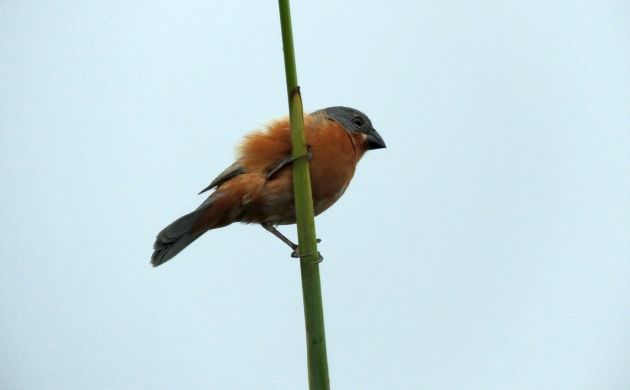
Ruddy-breasted Seedeaters are also common at Medio Queso.
Yeah, Medio Queso is one of the best birding hot spots in Costa Rica.
You can also drive right out there to the marsh and to the edge of the river where a boat guy named Rafael Palacios will take you out to see birds for about $10 an hour. Oh, and he knows where to find them too. Things like Yellow-breasted Crake, Spotted Rail, Least Bittern, and lots of other stuff!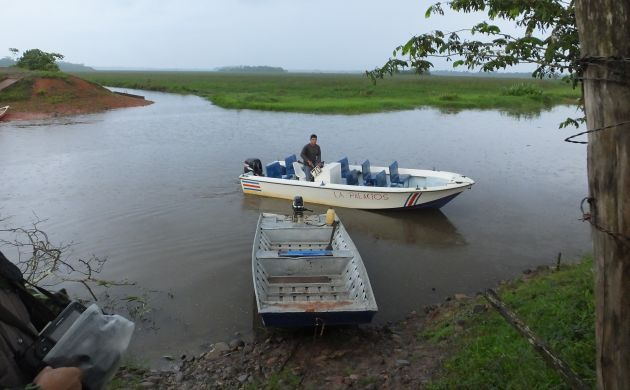
Rafael getting ready to start the magic birding boat ride.
These are all serious bonus birds for Costa Rica, and since others were seeing these and more sans playback and at arms length, well, we just had to do a trip! Scouting was rainy but did turn up Pinnated Bittern and a few other expected targets.
Back in the town of Los Chiles, we met with the rest of the group and scoped Scaled Pigeons and White-crowned Parrots in the rain until we saddled up and did some late afternoon birding at Medio Queso. No rails but we all got good looks at scoped Plumbeous Kites, a near fight between Pinnated Bitterns, Southern Lapwings, our first of many Nicaraguan Grackles, and Fork-tailed Flycatchers messing with a White-tailed Kite. Oh, there was that perched Green Ibis pretending to be a Black Vulture too.
The next morning, we had most of these and more on our magic boat ride. Cutting to the chase, we dipped on the rails (yes, ouuuch) but that was no surprise because the water levels were already too high. I think they are still possible any time of the year but the most reliable time for the “chicken-like marsh birds” is when waters are low in March, especially April, and early May.
BUT, we did see lots of other nice birds, most of them bonus species tough to see elsewhere in Costa Rica. I guess that isn’t too surprising since a quick 30 minute float down the river goes right into Nicaragua.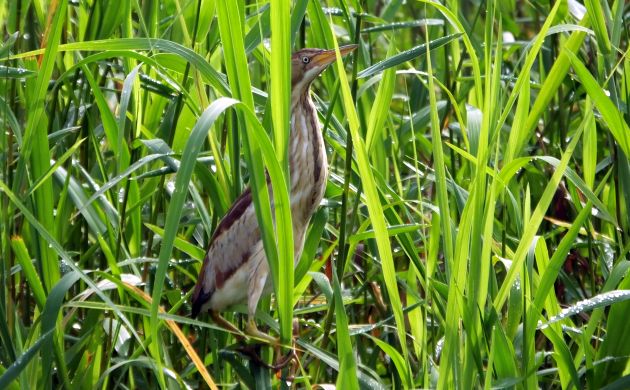
We had several Least Bitterns. There are only two spots I know of in Costa Rica where this tiny heron is reliable.
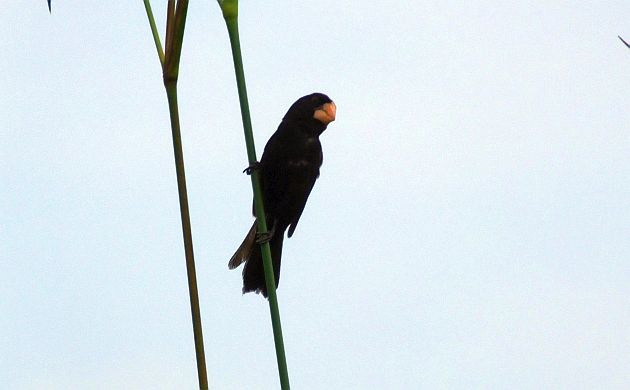 The Nicaraguan Seed-Finch has also been known as the Pink-billed Seed-Finch. Monster-billed Finch might also be appropriate.
The Nicaraguan Seed-Finch has also been known as the Pink-billed Seed-Finch. Monster-billed Finch might also be appropriate.
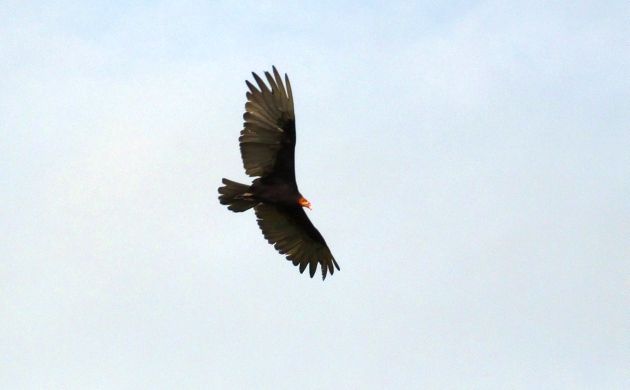 Lesser Yellow-headed Vultures were common and had cool technicolor heads.
Lesser Yellow-headed Vultures were common and had cool technicolor heads.
After the boat ride, we checked out of the much recommended Cabinas Felicia (cheap and clean), made a quick stop to dip on Yellow-winged Tanager but see a migrant Yellow-billed Cuckoo, and bird/drive to Cano Negro. Mid-day birding was predictably slow but we still picked up Red-breasted Blackbird, Snail Kite, and a few other species.
In Cano Negro, we stayed at Kingfisher Lodge, another small, friendly, well priced and very accommodating choice for lodging. Not really the best place for kingfishers but it was good for lots of other birds, including seven species of woodpeckers (we had two more species during a Cano Negro boat ride), Pied Puffbird, Common Potoo at night, Gray-headed Dove, Spot-breasted Wren, Royal Flycatcher, a heard only Bare-crowned Antbird, and dozens of other lowland species.
In Costa Rica, Cano Negro is the easiest place to see Gray-headed Dove and Spot-breasted Wren. This ain’t the wren.
The following morning, we had another boat ride, this one in Cano Negro national park. It was birdy as heck, stand outs being several White-ringed Flycatchers, Green Ibis, Black-collared Hawk, and lots of waterbirds but once again, we missed specialties like Sungrebe, American Pygmy Kingfisher, and Jabiru because of high water (low water concentrates the birds).
After the boat, we had breakfast, did the bird list (150 plus species), and started birding our way back home. We identified quite a few bonus birds and I don’t know how many year birds I picked up but must be close to 600 species for 2015.
Get those bonus birds at Los Chiles and Cano Negro! If eating in small, local restaurants, though, allocate a lot of time for meals. At least you can still bird while you wait.


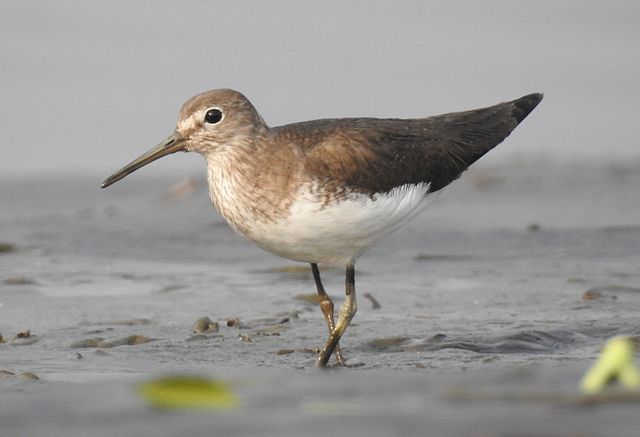

 New writers welcome – please contact us for details.
New writers welcome – please contact us for details.

















Hi Patrick ! Any chance you know any birders looking for a good priced lot in costa rica? Im a full time birder trying to sell my beautiful 3000 sqm. Océan view lot in ostional turtle reserve beach! Its a very nice place with excellent birding and beaches…Im in Ecuador now and I will like to sell this land for a good price! Email gcarabelli@hotmail.com Thanks